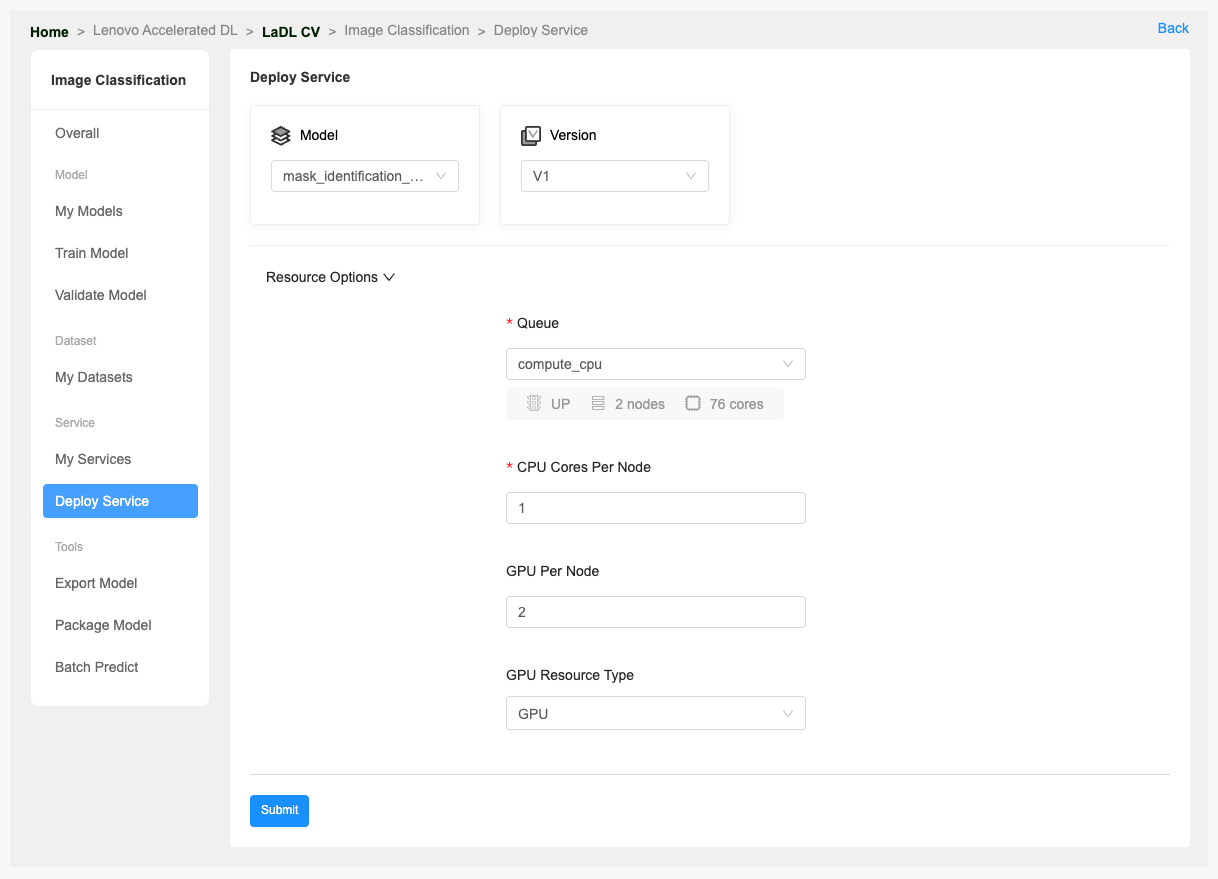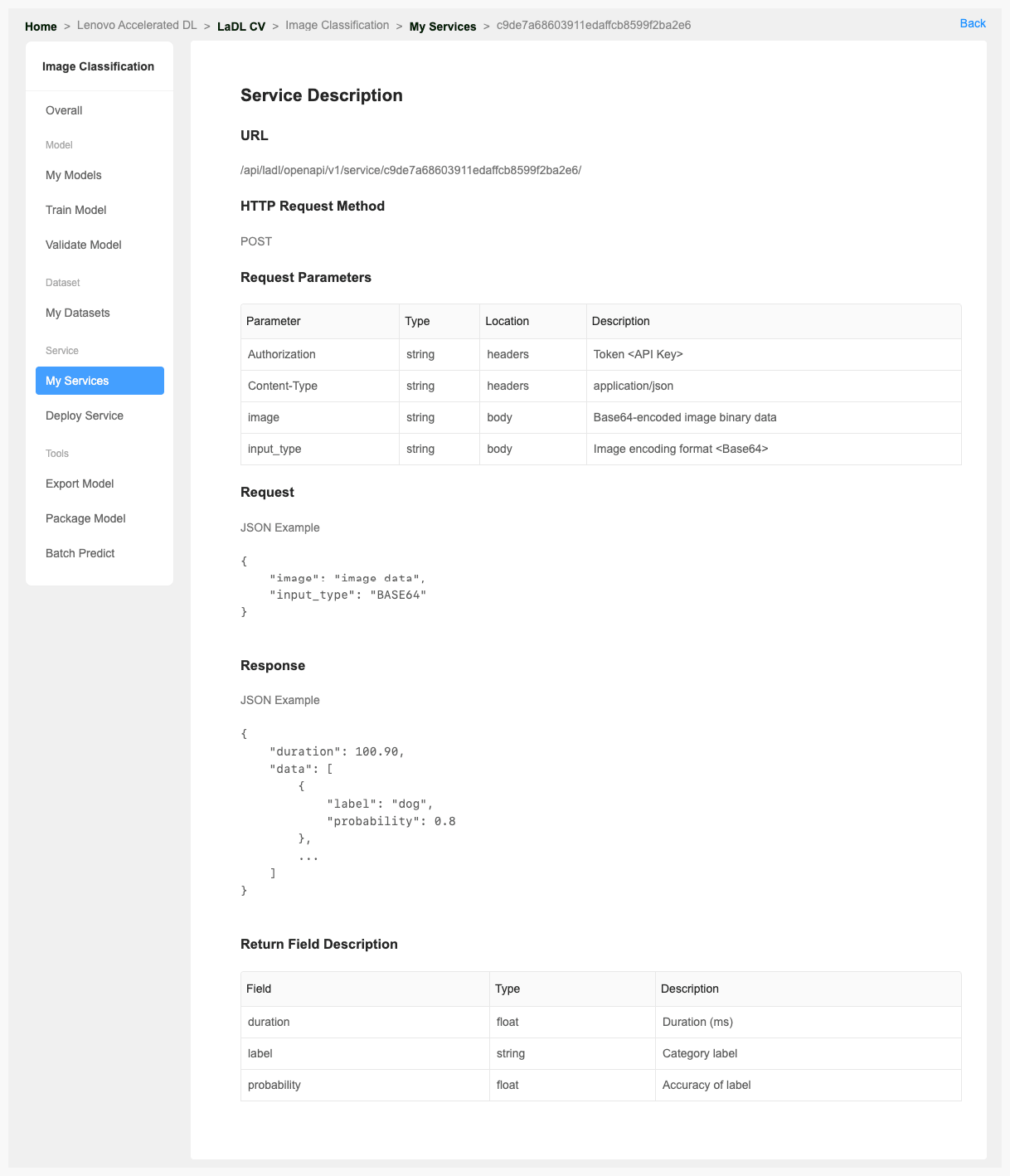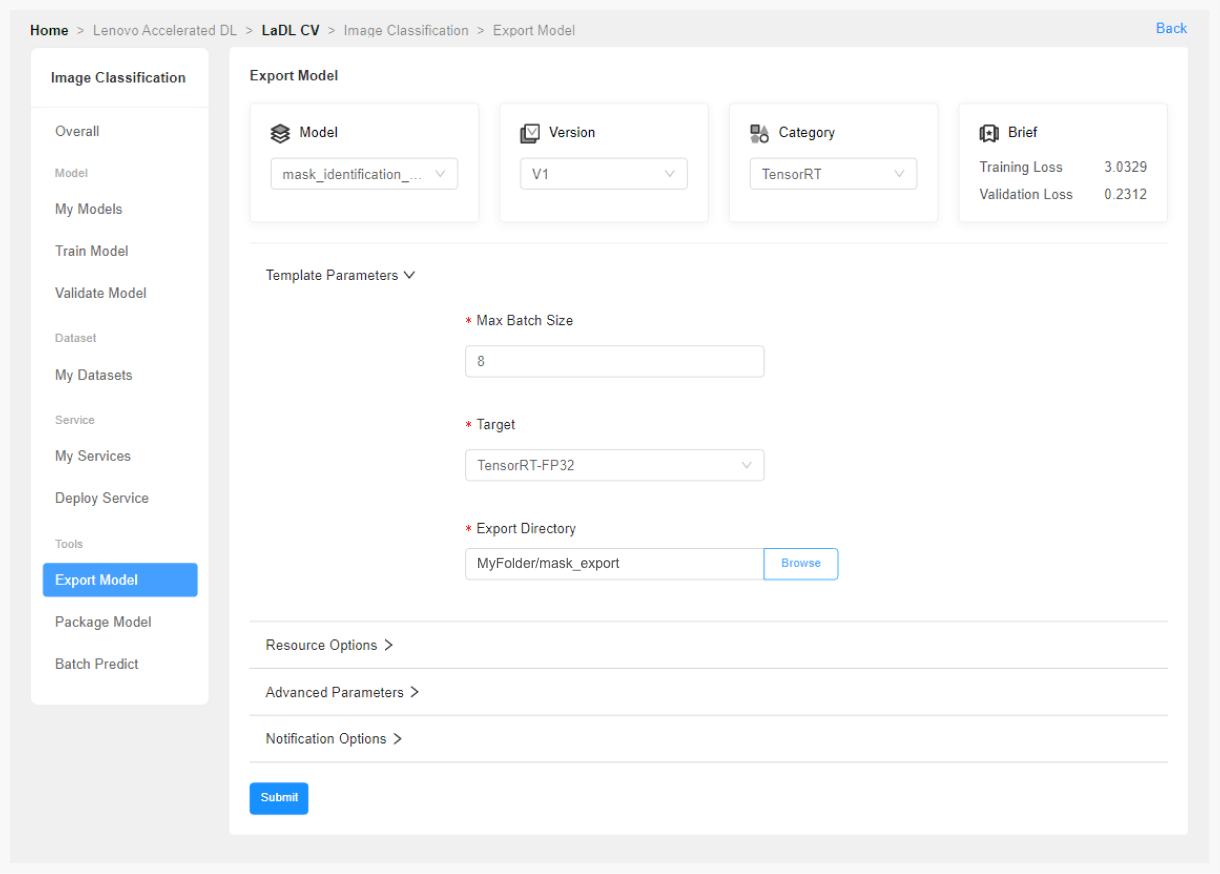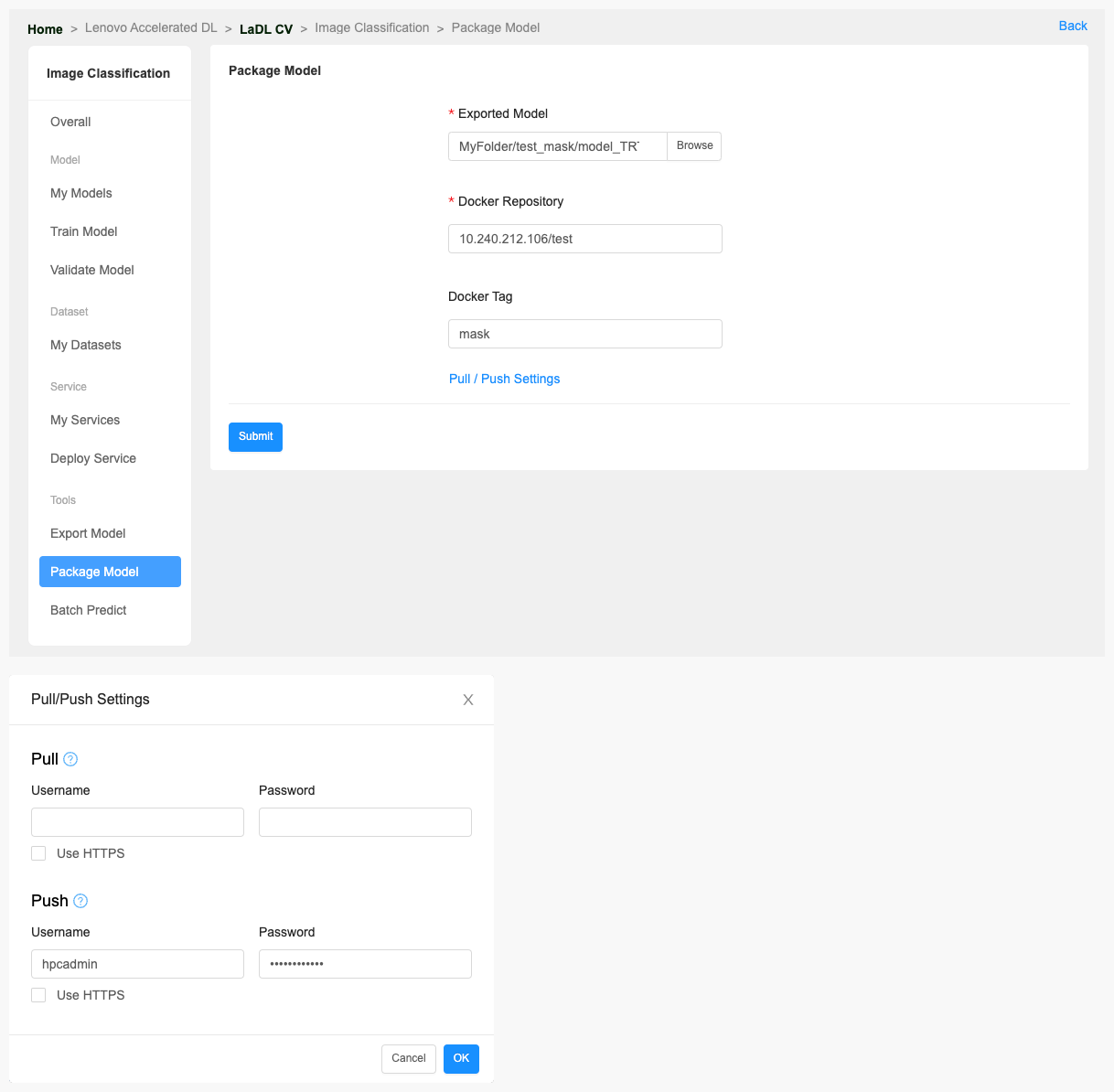
Mask Identification
By training the image classification AI model, the intelligent recognition of
"whether the mask is worn correctly" is realized, which is widely used in the monitoring of new
COVID epidemic prevention place.
Background
- Wearing a mask is the main way of preventing the spread of COVID in public. However, in the face of public places with large numbers of people, such as shopping malls, stations, factories, etc., it is difficult for place managers to organize enough manpower to remind people in the place to wear masks correctly. With the help of the AI mask recognition model, people who are not wearing masks can be quickly found and reminded, which greatly reduces management costs and the possibility of virus transmission.
Prepare Dataset
- First step: To clarify the categories that need to be identified. In this example, "wearing a mask" and "not wearing a mask" are used as examples.
- Second step: To prepare several face photos that can reflect these two categories. It is recommended that each category contains at least 200 photos, and collects multiple angles such as front and side. For example:

PS: Click here to download a sample dataset.
If you need a complete dataset, please send mail to hpchelp@lenovo.com
- Third step: Create a dataset through LiCO.
Click [Create Dataset].
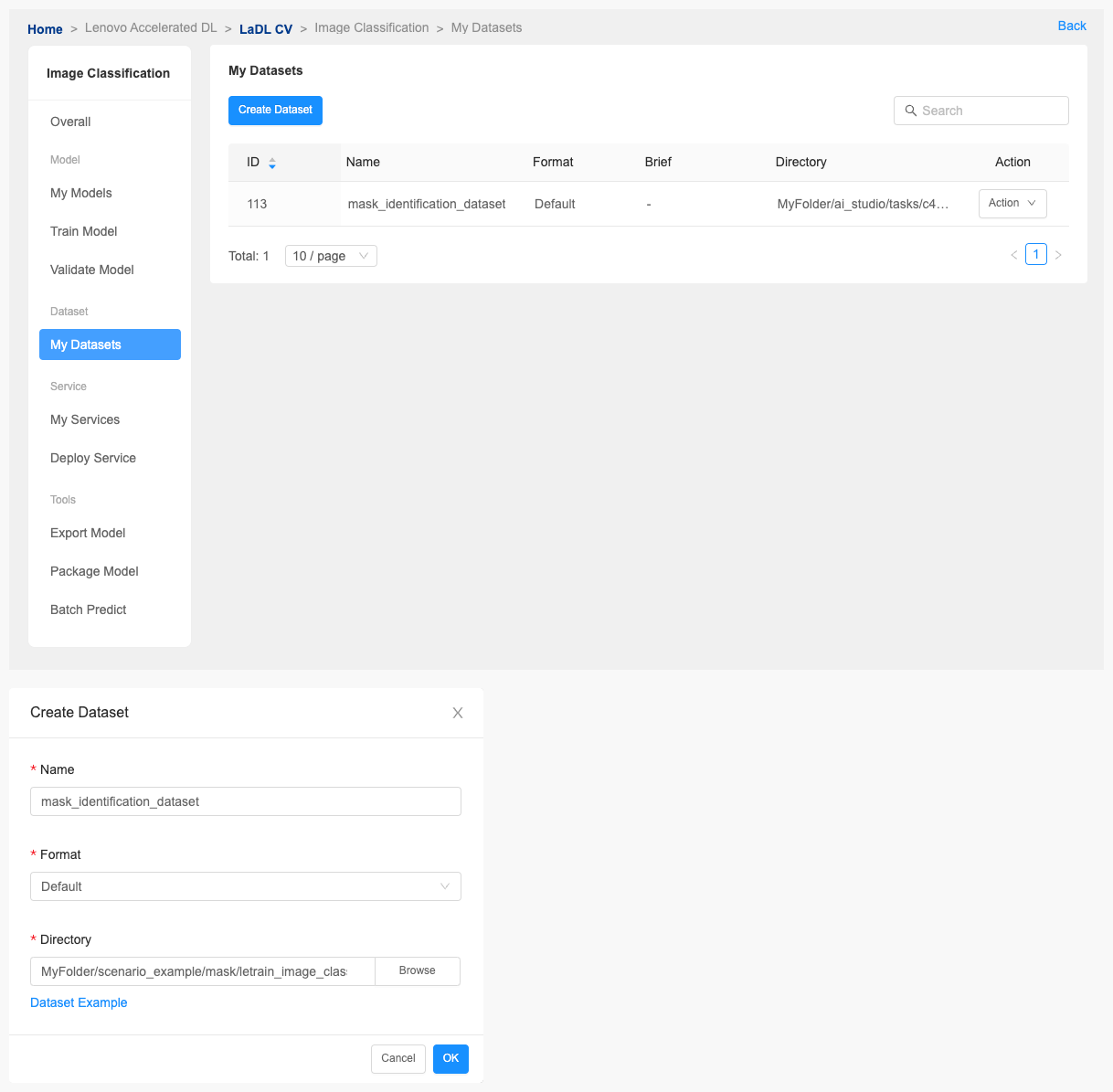
Train Model
- When your dataset preparation is complete, you can click [Create Model] to complete the model creation.
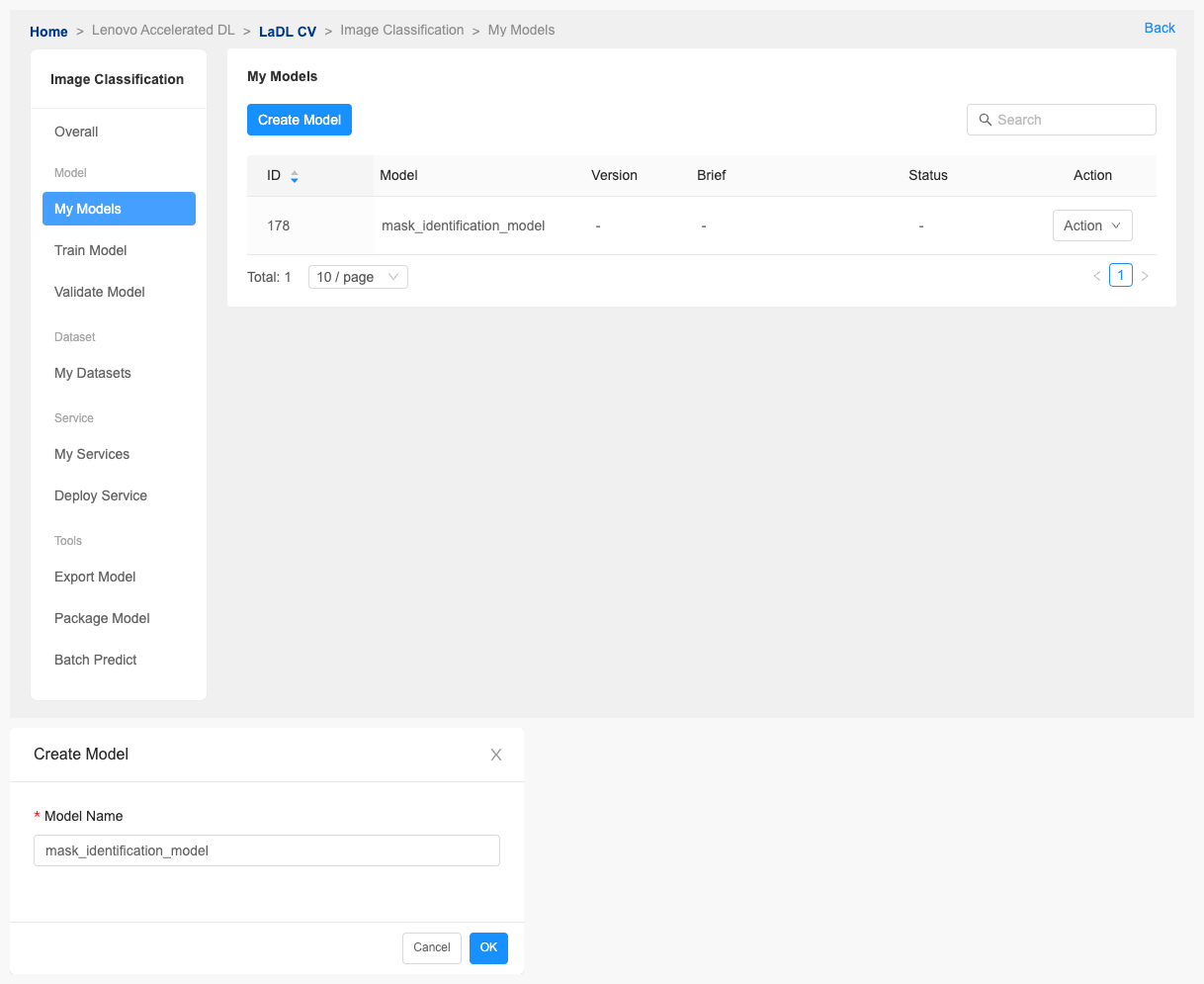
- And then click [Train Model] to start training.
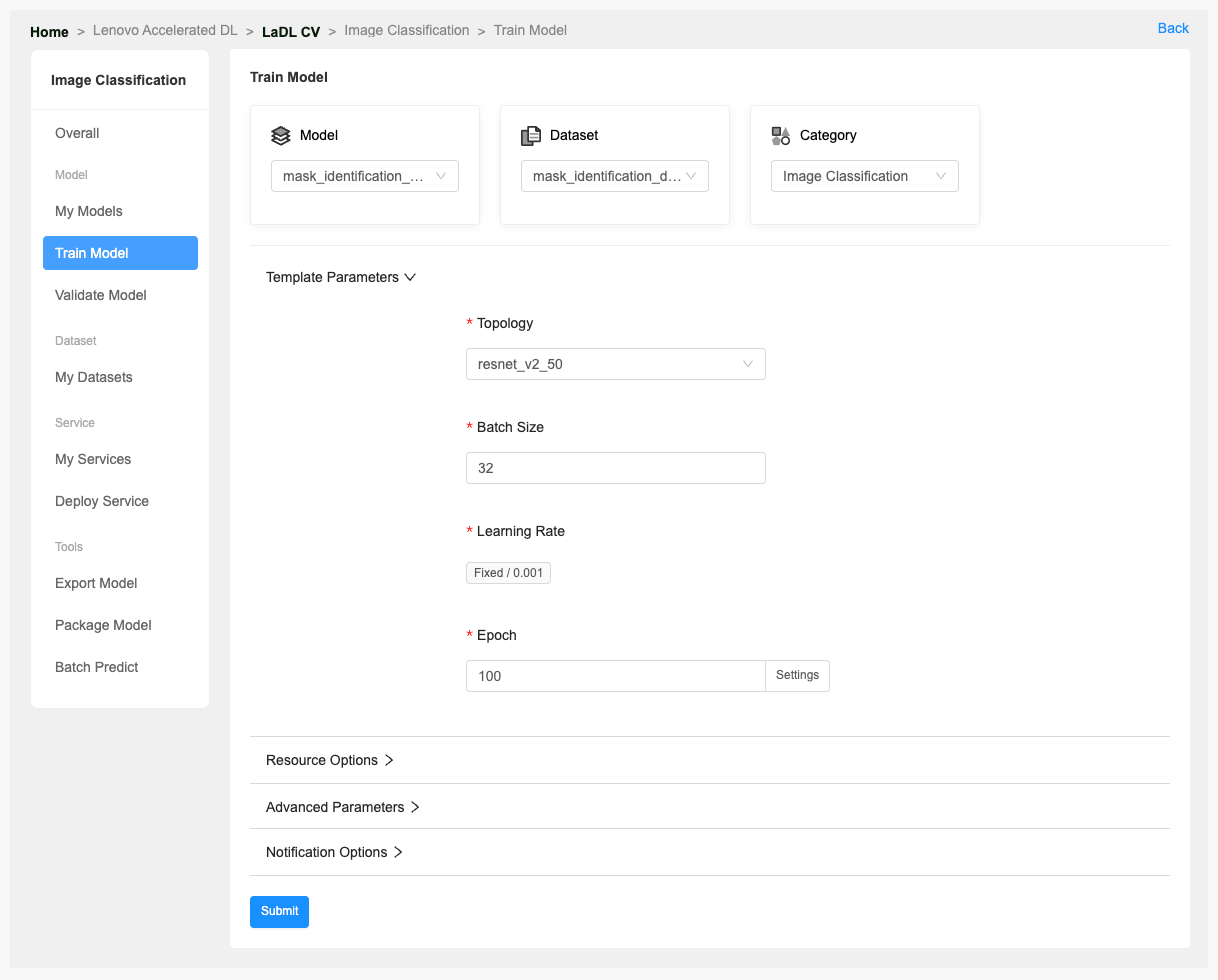
Validate Model
- After the model training is completed, the model accuracy can be verified online through [Validate Model].
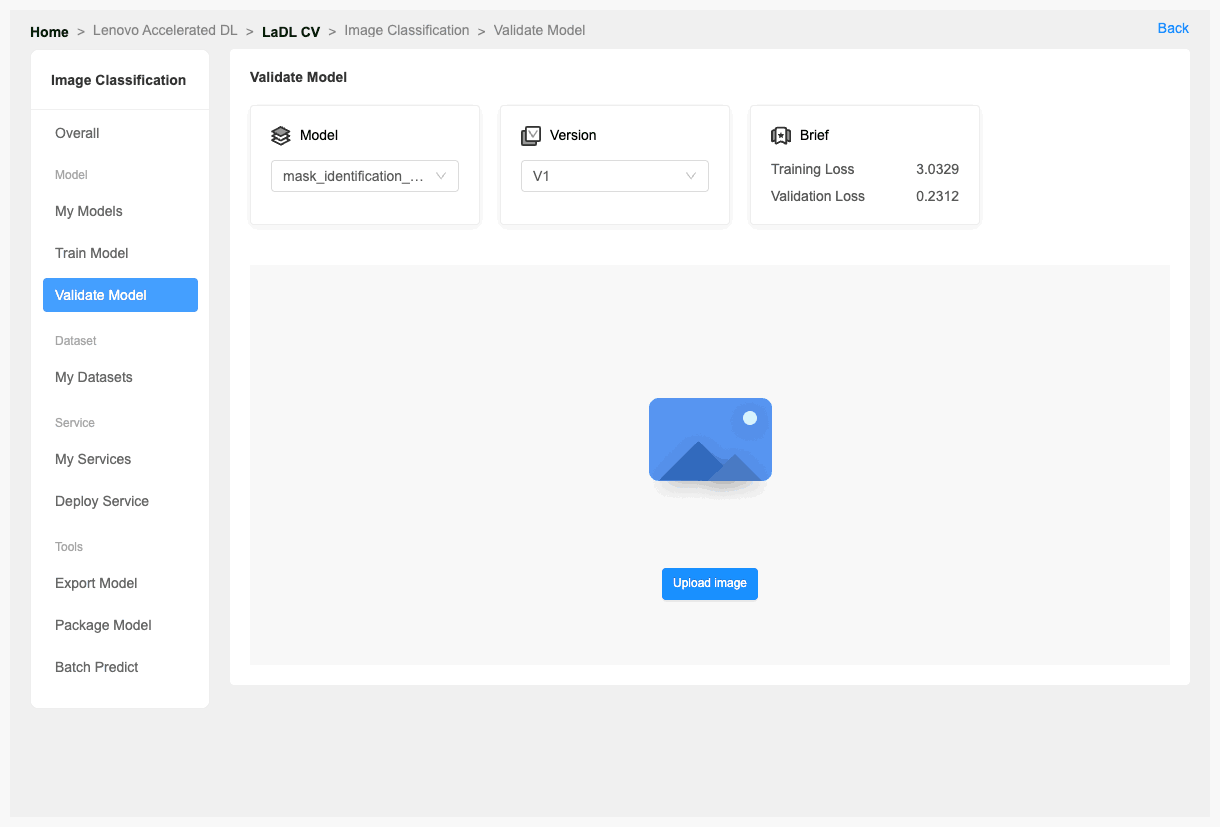
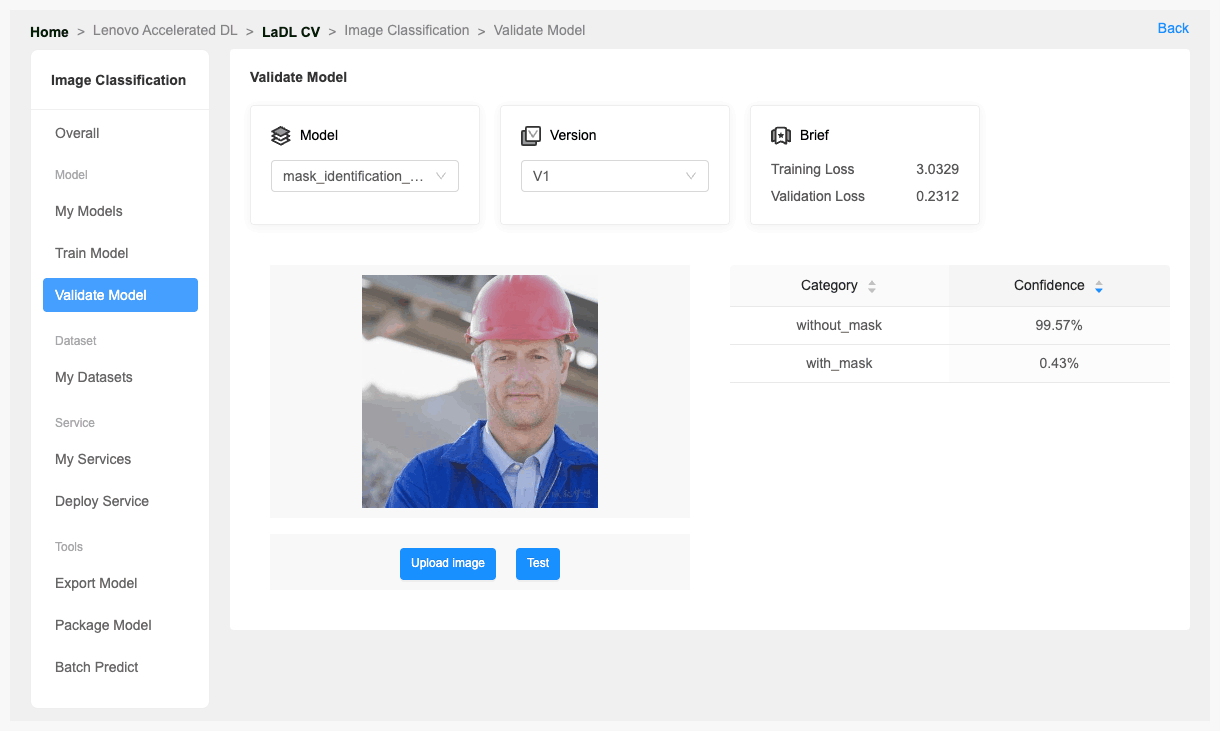
- You can also predict multiple images by [Batch Predict].
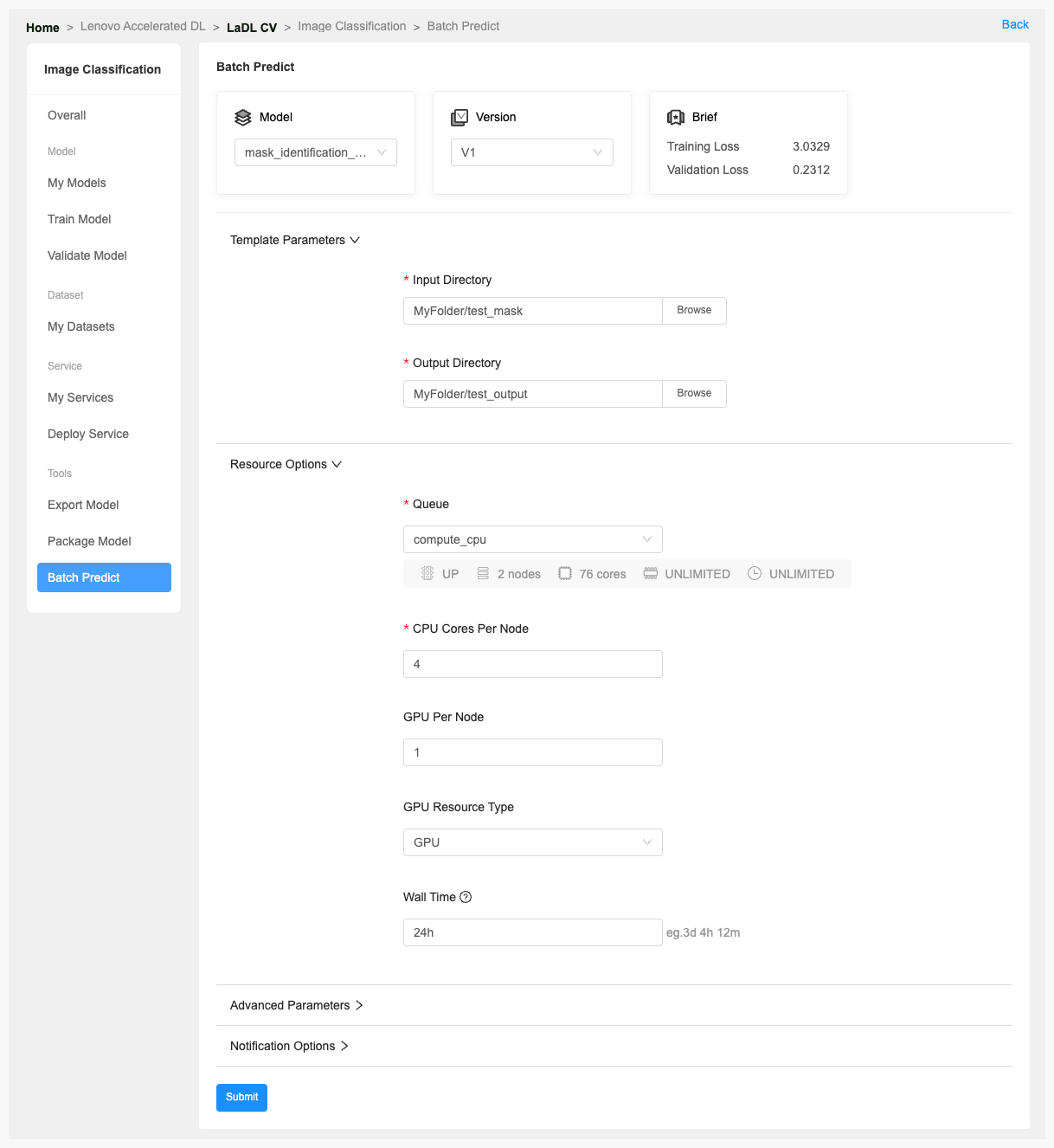
Deploy Service
When you have a model that achieves the expected predictions, you can deploy it as sevices in LiCO or package it to docker platform.
- You can deploy the model by [Deploy Service]. In [My Services] you can manage all deployed services in current scenario. Instructions are provided for each service, which you can view it by clicking on the service id.
- You can also publish the trained model to the docker repository. First click [Export Model] to export the trained model files, and then publish the expoted model to the docker repositry in the [Package Model]. After that, you can refer to the [LiCO User Guide] to use the published docker image.
